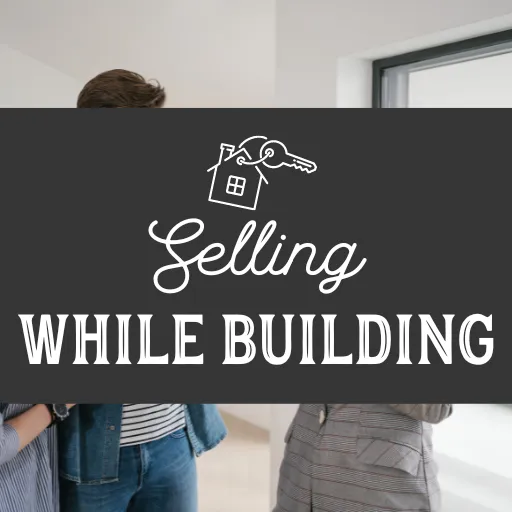Education& Resources helping homeowners and builders make informed choices about Building homes that last
Our ultimate goal is to create a community of builders and homeowners who are dedicated to improving the quality of life in their neighborhoods and communities.
Education& Resources helping homeowners and builders make informed choices about Building homes that last
Our ultimate goal is to create a community of builders and homeowners who are dedicated to improving the quality of life in their neighborhoods and communities.

Sealing the Gaps: Interior Air Sealing for a Cleaner Home
Hey everybody, TJ here with Sanctified Homes and Construction. When building or remodeling, air sealing often concerns visible areas like windows, doors, and exterior walls. But to truly make a home energy-efficient and maintain a healthier indoor environment, interior air sealing is essential.
At Sanctified Homes, we’ve learned that interior air sealing isn't just about keeping drafts out—it’s about improving indoor air quality, reducing energy costs, and creating a cleaner, more comfortable home environment.
Why Interior Air Sealing Matters
Air sealing isn’t only about stopping cold air from coming in through the exterior. Often, homes have areas where contaminated or unfiltered air from spaces like basements, crawl spaces, or attics can seep into the living spaces. This can bring in dust, allergens, mold spores, and even unwanted moisture, making air sealing a priority for anyone wanting a cleaner, healthier home. Here are some of the essential areas where interior air sealing makes a difference:
1. Penetrations Through Floors and Ceilings
In multi-level homes, air can easily move between floors through gaps made for plumbing, electrical wiring, and HVAC ducts. These gaps allow stale or potentially contaminated air from basements and crawl spaces to enter your home. Imagine a basement area where dust, radon gas, or even chemical fumes from stored products can rise up to your main living spaces if not properly sealed. Blocking these passages ensures that only the air you want in your home is present.
2. Air Leaks Around Electrical Outlets and Fixtures
Outlets, light switches, and recessed lighting are common culprits for air leaks, especially when placed on exterior walls or floors connected to basements. Installing foam gaskets behind outlet and switch plates can help seal gaps around these areas, preventing drafts and making it harder for allergens and dust to travel from one space to another. Recessed lighting in particular should have airtight housings or be sealed around the fixture to ensure your air quality and energy efficiency aren't compromised.
3. HVAC and Plumbing Penetrations
Every spot where plumbing or ductwork comes through walls, floors, or ceilings is a potential weak spot in air sealing. Around HVAC trunks or plumbing pipes, make sure all gaps are sealed with an appropriate air-blocking material. This includes the bottom of walls where pipes run down to the basement, as well as through the ceiling and attic spaces. Expanding foam sealant or caulk can work effectively around these penetrations, providing an airtight seal that protects your indoor environment.
4. Ensuring Proper Seal Around the Sump Pump Crock
In homes with basements, sump pumps are necessary to keep water out. However, the sump crock can be a significant source of unfiltered air if it isn’t sealed correctly. Ensuring that the sump crock lid is airtight will reduce the chance of drawing in unfiltered, moist air from the soil, which can potentially bring in radon gas or other contaminants.
5. Sealing Connections to the Exterior
Any place where wiring, vents, or other utilities exit through exterior walls, like dryer vents and exhaust fans, needs to be carefully sealed. If these gaps are not sealed properly, it can allow outside air to sneak in, and heated or cooled air from your home to escape. Air sealing these connections also acts as a bug barrier, preventing insects from finding their way into your home.
Benefits of Proper Interior Air Sealing
Energy Efficiency: By sealing gaps and leaks, you reduce the amount of energy required to heat or cool your home. This means lower utility bills and a more sustainable living environment.
Improved Air Quality: Blocking unwanted airflow from basements, attics, and other non-living spaces keeps contaminants from spreading throughout your home.
Enhanced Comfort: Proper air sealing means fewer drafts, a more consistent temperature throughout your home, and fewer fluctuations that can make certain rooms uncomfortable.
Pest Control: Sealing interior air gaps also acts as a barrier against pests. Bugs and small critters often find their way into living spaces through unsealed cracks and holes around pipes, vents, and wires.
The Sanctified Homes Approach
At Sanctified Homes, we go above and beyond to ensure every detail of air sealing is addressed. We start by identifying every potential leak point and using high-quality materials like backer rods, expanding foam, and caulk designed for long-term performance. We also incorporate advanced products like airtight sump pump lids, foam gaskets behind outlets, and insulation sleeves around ductwork to enhance the overall integrity of our projects.
If you’re considering a custom home or looking for ways to improve your current home’s energy efficiency, contact us at Sanctified Homes to learn more about our air-sealing methods and materials. For a truly comfortable, clean, and efficient home environment, make sure air sealing is on your checklist.
In the meantime, don’t forget to raise your standard—because every detail matters when it comes to building better homes!

Home Building Checklist
We understand that the process of building comes with a lot of decision-making. So we created the Home Building Checklist to guide your decision-making process, and it's yours for free here!
WHAT WOULD YOU LIKE TO LEARN?
How can we help?







Why You Will Love Working With Us


Transparency
Honesty is always the best policy, and this is the policy we swear by. We aim to be as transparent as possible with our clients when building their homes.
- We have no hidden fees or surprises.
- We disclose every invoice and bid because we have nothing to hide.
- We are upfront about all costs, including the price or materials and labor costs, so you can trust every dollar of the process.

Experience
Our team has over 25 years of experience in construction and design, so we know how to make your dream home a reality.
- Over 200 homes build with our combined expertise!
- 25 years experience in
Parade of Homes - Builder Of the Year with Madison Area Builders Association
Ultimately, we believe in raising standards
We believe that by helping to create a community of builders and homeowners who are dedicated to improving the quality of life in their neighborhoods and communities, we can help to create a more equitable and inclusive society.
We want to empower homeowners to become involved in the process of creating their own safe and beautiful living environments.
We also want to give builders the opportunity to make a lasting and positive impact on the community by providing quality homes and neighborhoods. By working together, we can help create a better future for everyone involved.

The Blessed to Build Foundation is a 501(c)3 Non Profit providing education & resources to help homeowners and home builders make informed choices about building homes that last.
Dane County, Wisconsin
Hire a Builder
If you are looking to build a new home in the following cities, connect with Sanctified Homes & Construction to start the conversation.
Copyright Blessed to Build Foundation, Inc. 501(c)3

